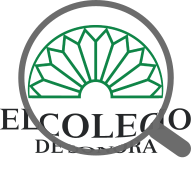Evolution of Ixtapa-Zihuatanejo, Mexico, from the life cycle as a tourism destination model
| dc.audience | generalPublic | |
| dc.contributor.author | Osorio García, Maribel | |
| dc.contributor.author | Deverdum Reyna, Marie Eugenie | |
| dc.contributor.author | Mendoza Ontiveros, Martha Marivel | |
| dc.contributor.author | Benítez López, Jazmín | |
| dc.coverage.spatial | MX-SON | en-US |
| dc.creator | OSORIO GARCIA, MARIBEL; 202147 | |
| dc.creator | Deverdum Reyna, Marie Eugenie | |
| dc.creator | MENDOZA ONTIVEROS, MARTHA MARIVEL; 123106 | |
| dc.creator | BENITEZ LOPEZ, JAZMIN; 102852 | |
| dc.date | 2019-02-13 | |
| dc.date.accessioned | 2022-06-28T19:43:02Z | |
| dc.date.available | 2022-06-28T19:43:02Z | |
| dc.date.issued | 2019-02-13 | |
| dc.description | This article’s purpose is to analyze the Integrally Planned Center of Ixtapa-Zihuatanejo in order to distinguish the status prevailing in its evolution, according to Butler’s life cycle as a tourism destination model. The methodology applied by the European Commission is used in order to demonstrate that there are currently clear signs of decline, such as the reconfiguration of tourism flows and the decrease in the stay, seasonality and occupancy indicators. Although there is no statistical information available to work with the indicators required by methodology, the exogenous and endogenous factors, which have influenced the trajectory, as well as the changes and problems generated, are characterized. It follows that Ixtapa-Zihuatanejo’s planned development halted as an international tourism destination at the beginning of the 21st century, when it started to show signs of decline and it changed its dynamics from an international destination to a national one. | en-US |
| dc.description | El objetivo de este artículo es analizar el Centro Integralmente Planificado de Ixtapa-Zihuatanejo, para distinguir la condición que prevalece en su evolución, de acuerdo con el modelo del ciclo de vida como destino turístico de Butler. Se retoma la metodología aplicada por la Comisión Europea, para demostrar que en la actualidad se registran signos claros de declive, tales como la recomposición de los flujos turísticos y el comportamiento a la baja de los indicadores de la estadía, la estacionalidad y la ocupación. Aunque no existe información estadística para trabajar todos los indicadores requeridos por la metodología, se logran caracterizar los factores exógenos y endógenos, que han influido en la trayectoria, y los cambios y las problemáticas generados. Se concluye que Ixtapa-Zihuatanejo detuvo su desarrollo planificado como destino turístico internacional a principios del siglo XXI, cuando comenzó a mostrar signos de declive y cambió su dinámica de destino internacional a nacional. | es-ES |
| dc.description.abstract | This article’s purpose is to analyze the Integrally Planned Center of Ixtapa-Zihuatanejo in order to distinguish the status prevailing in its evolution, according to Butler’s life cycle as a tourism destination model. The methodology applied by the European Commission is used in order to demonstrate that there are currently clear signs of decline, such as the reconfiguration of tourism flows and the decrease in the stay, seasonality and occupancy indicators. Although there is no statistical information available to work with the indicators required by methodology, the exogenous and endogenous factors, which have influenced the trajectory, as well as the changes and problems generated, are characterized. It follows that Ixtapa-Zihuatanejo’s planned development halted as an international tourism destination at the beginning of the 21st century, when it started to show signs of decline and it changed its dynamics from an international destination to a national one. | en-US |
| dc.description.abstract | El objetivo de este artículo es analizar el Centro Integralmente Planificado de Ixtapa-Zihuatanejo, para distinguir la condición que prevalece en su evolución, de acuerdo con el modelo del ciclo de vida como destino turístico de Butler. Se retoma la metodología aplicada por la Comisión Europea, para demostrar que en la actualidad se registran signos claros de declive, tales como la recomposición de los flujos turísticos y el comportamiento a la baja de los indicadores de la estadía, la estacionalidad y la ocupación. Aunque no existe información estadística para trabajar todos los indicadores requeridos por la metodología, se logran caracterizar los factores exógenos y endógenos, que han influido en la trayectoria, y los cambios y las problemáticas generados. Se concluye que Ixtapa-Zihuatanejo detuvo su desarrollo planificado como destino turístico internacional a principios del siglo XXI, cuando comenzó a mostrar signos de declive y cambió su dinámica de destino internacional a nacional. | es-ES |
| dc.identificator | 5 | |
| dc.identifier | https://regionysociedad.colson.edu.mx:8086/index.php/rys/article/view/1012 | |
| dc.identifier | https://doi.org/10.22198/rys2019/31/1012 | |
| dc.identifier.uri | https://repositorio.colson.edu.mx/handle/2012/45954 | |
| dc.language.iso | spa | |
| dc.publisher | El Colegio de Sonora | es-ES |
| dc.rights | Derechos de autor 2019 Maribel Osorio García, Marie Eugenie Deverdum Reyna, Martha Marivel Mendoza Ontiveros, Jazmín Benítez López | es-ES |
| dc.rights | https://creativecommons.org/licenses/by-nc/4.0/ | es-ES |
| dc.rights | info:eu-repo/semantics/openAccess | es-ES |
| dc.source | 2448-4849 | |
| dc.source | 1870-3925 | |
| dc.source | región y sociedad; Vol. 31 (2019): Rolling Pass | en-US |
| dc.source | región y sociedad; Vol. 31 (2019): Publicación continua | es-ES |
| dc.subject | Ciencias Sociales | |
| dc.subject | Tourism destinations | en-US |
| dc.subject | Life cycle | en-US |
| dc.subject | Tourism development | en-US |
| dc.subject | Ixtapa-Zihuatanejo | en-US |
| dc.subject | Destinos turísticos | es-ES |
| dc.subject | Ciclo de vida | es-ES |
| dc.subject | Desarrollo turístico | es-ES |
| dc.subject | Ixtapa-Zihuatanejo | es-ES |
| dc.subject.lcsh | Tourism destinations | en-US |
| dc.subject.lcsh | Life cycle | en-US |
| dc.subject.lcsh | Tourism development | en-US |
| dc.subject.lcsh | Ixtapa-Zihuatanejo | en-US |
| dc.subject.lcsh | Destinos turísticos | es-ES |
| dc.subject.lcsh | Ciclo de vida | es-ES |
| dc.subject.lcsh | Desarrollo turístico | es-ES |
| dc.subject.lcsh | Ixtapa-zihuatanejo | es-ES |
| dc.title | Evolution of Ixtapa-Zihuatanejo, Mexico, from the life cycle as a tourism destination model | en-US |
| dc.title | La evolución de Ixtapa-Zihuatanejo, México, desde el modelo del ciclo de vida del destino turístico | es-ES |
| dc.type | info:eu-repo/semantics/article | |
| dc.type | info:eu-repo/semantics/publishedVersion |




